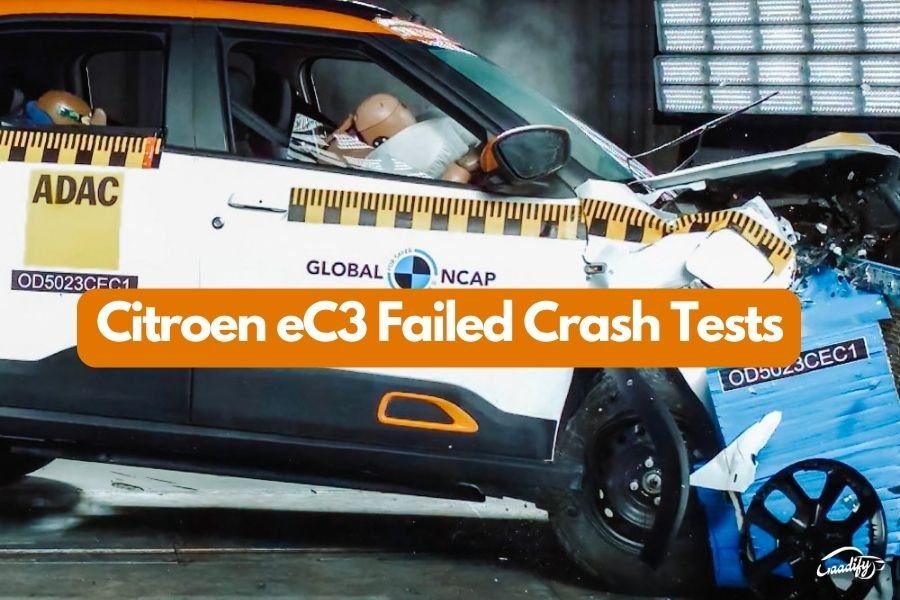The made-in-India Citroen eC3 electric hatchback failed miserably in the latest round of crash tests conducted by Global NCAP under its #SaferCarsForIndia campaign. It received a 0-star rating in Adult Occupant Protection (AOP) and a 1-star safety rating for Child Occupant Protection (COP).
Key Reason For Such Low Rating
The tested Citroen eC3 was equipped only with dual-front airbags, belt load limiters, and front seat belt reminders. It notably lacked several essential safety features, exacerbating its poor safety rating. These glaring omissions include side and curtain airbags, passenger-airbag deactivation switch, electronic stability control, seat belt pretensioners, 3-point seat belts for all, ISOFIX anchorages, or seatbelt reminders for the rear seats.
The absence of these safety features significantly compromises passenger safety and contributes to the vehicle’s dismal safety performance in Global NCAP’s crash tests.
Must Check: Unveiling the Truth: Is Global NCAP A Charity or A Business?
Citroen eC3 Crash Test Report
- The eC3 scored 20.86 points out of 34 in AOP and 10.55 points out of 49 in COP.
- During the frontal impact, the protection offered to the driver’s and passenger’s heads and necks was good, but the driver’s chest protection was weak, and the passenger’s was poor, resulting in a 1-star rating.
- The driver’s knee had marginal protection during frontal impact, while the passenger’s knees had good protection.
- GNCAP rated the car’s footwell area unstable; however, the bodyshell was rated as stable.
- In the side impact tests, the Citroen eC3 showed marginal head protection, adequate chest protection, and good protection for the abdomen and pelvis. However, the discrepancy between its performance in frontal and side impacts led to a deduction at one start in the overall ratings.

- Since the eC3 misses out the side and curtain airbags, the side pole impact test wasn’t performed.
- The EV lacks Electronic Stability Control (ESC), which is an essential feature according to the ongoing crash parameters set by Global NCAP.
- Its SBR system also doesn’t meet the minimum requirement criteria.
- In child occupant protection testing, the forward-facing child seat for the 3-year-old dummy failed to prevent excessive forward movement and head contact in a frontal crash.
- The rearward-facing seat for the 18-month-old provided almost full protection in frontal impact but exposed the head in the side impact, resulting in poor scores.
Also Read: Tata Nexon Crash Tested Again By Global NCAP; Scores 5 Star Rating








